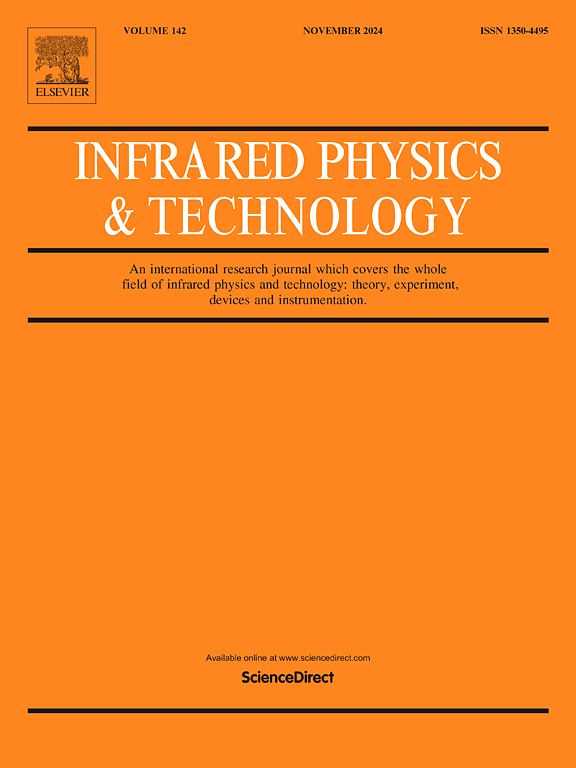ISSLDIA: Internal structure self-learning and low-dimensional image assistance for single hyperspectral image super-resolution
IF 3.1
3区 物理与天体物理
Q2 INSTRUMENTS & INSTRUMENTATION
引用次数: 0
Abstract
The single hyperspectral image super-resolution (HSI-SR) plays an important role in enhancing the spatial resolution of HSIs by only using their corresponding low-resolution hyperspectral images (LR-HSI). Most single HSI-SR methods have achieved great success recently and can be simply divided into learning-based and model-based methods. However, because of the difficulty of obtaining sufficient and identically distributed trainable HSIs, the former usually cut a portion of LR-HSIs and assumes that the corresponding high-resolution hyperspectral images (HR-HSI) are known to learn a learning module, which is difficult to achieve in reality. Although the latter do not require the training phase, they will inevitably influence the reconstruction accuracy because of the absence of a training phase. In this paper, we propose an internal structure self-learning low-dimensional image assistance (ISSLDIA) HSI-SR method by fully capturing the internal structure of LR-HSIs and similar low-dimensional images to reconstruct HR-HSIs. First, because the LR-HSI and HR-HSI contain complete spectral information, that is, the spectral correlation information of the LR-HSI and HR-HSI are similar to each other, we can extract the spectral information of the LR-HSI to guide the spectral reconstruction of the HR-HSI. Second, although the trainable HR-HSIs are hard to require, the high-resolution low-dimensional images are relatively easy to require. Both of them have similar spatial structures in small patches. We can learn the spatial structures from these low-dimensional images to assist in the spatial structure reconstruction of HR-HSI. Third, the LR-HSI is the downsampled version of the HR-HSI. Similarly, we can also get the downsampled version of LR-HSI by using the same downsampled operator. The similarity relationship between the LR-HSI and the downsampled LR-HSI is similar to that between the HR-HSI and the LR-HSI. Hence, we used the learned similarity relationship to the reconstruction of the HR-HSI. Finally, we integrate the three modules to generate an HSI-SR module, which is optimized using the alternating direction method of multipliers (ADMM). The experimental results on four HSI datasets show the superiority of the proposed method to some other traditional and advanced SR methods. The demo code can be found at https://github.com/jinhaoRen/ISSLDIA.
单张高光谱图像超分辨率的内部结构自学习和低维图像辅助
单幅高光谱图像超分辨率(HSI-SR)在仅使用hsi对应的低分辨率高光谱图像(LR-HSI)来提高hsi的空间分辨率方面发挥着重要作用。近年来,大多数单一的HSI-SR方法都取得了很大的成功,可以简单地分为基于学习的方法和基于模型的方法。然而,由于难以获得足够且分布相同的可训练hsi,前者通常会切割一部分lr - hsi,并假设相应的高分辨率高光谱图像(HR-HSI)已知学习一个学习模块,这在现实中很难实现。后者虽然不需要训练阶段,但由于缺乏训练阶段,不可避免地会影响重构精度。本文提出了一种内部结构自学习低维图像辅助(ISSLDIA) HSI-SR方法,通过充分捕获lr - hsi和类似低维图像的内部结构来重建hr - hsi。首先,由于LR-HSI和HR-HSI包含完整的光谱信息,即LR-HSI和HR-HSI的光谱相关信息彼此相似,我们可以提取LR-HSI的光谱信息来指导HR-HSI的光谱重建。其次,虽然难以要求可训练的hr - hsi,但相对容易要求高分辨率的低维图像。它们都有相似的小块空间结构。我们可以从这些低维图像中学习空间结构,以辅助HR-HSI的空间结构重建。第三,LR-HSI是HR-HSI的下采样版本。类似地,我们也可以通过使用相同的下采样算子得到LR-HSI的下采样版本。LR-HSI与下采样LR-HSI之间的相似关系与HR-HSI与LR-HSI之间的相似关系相似。因此,我们使用学习到的相似关系来重建HR-HSI。最后,我们将三个模块整合成一个HSI-SR模块,并使用乘法器的交替方向方法(ADMM)对其进行优化。在4个HSI数据集上的实验结果表明,该方法优于其他一些传统和先进的SR方法。演示代码可以在https://github.com/jinhaoRen/ISSLDIA上找到。
本文章由计算机程序翻译,如有差异,请以英文原文为准。
求助全文
约1分钟内获得全文
求助全文
来源期刊
CiteScore
5.70
自引率
12.10%
发文量
400
审稿时长
67 days
期刊介绍:
The Journal covers the entire field of infrared physics and technology: theory, experiment, application, devices and instrumentation. Infrared'' is defined as covering the near, mid and far infrared (terahertz) regions from 0.75um (750nm) to 1mm (300GHz.) Submissions in the 300GHz to 100GHz region may be accepted at the editors discretion if their content is relevant to shorter wavelengths. Submissions must be primarily concerned with and directly relevant to this spectral region.
Its core topics can be summarized as the generation, propagation and detection, of infrared radiation; the associated optics, materials and devices; and its use in all fields of science, industry, engineering and medicine.
Infrared techniques occur in many different fields, notably spectroscopy and interferometry; material characterization and processing; atmospheric physics, astronomy and space research. Scientific aspects include lasers, quantum optics, quantum electronics, image processing and semiconductor physics. Some important applications are medical diagnostics and treatment, industrial inspection and environmental monitoring.

 求助内容:
求助内容: 应助结果提醒方式:
应助结果提醒方式:


